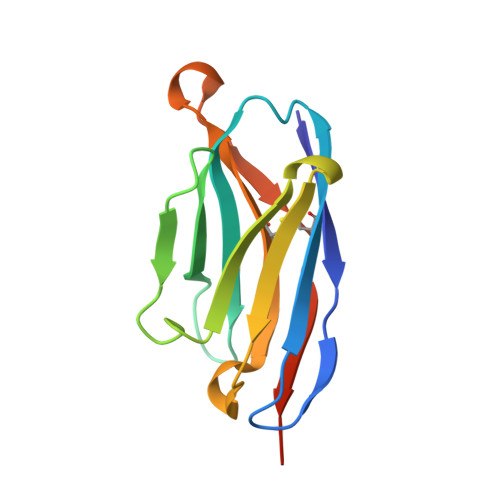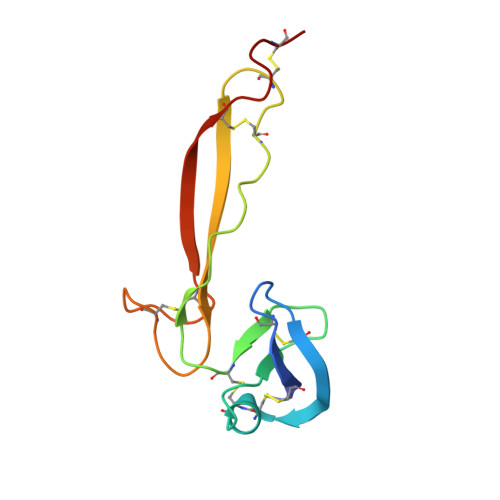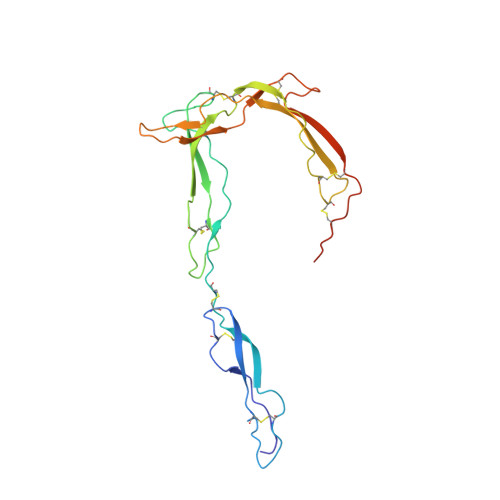Characterization of the bispecific VHH antibody tarperprumig (ALXN1820) specific for properdin and designed for low-volume administration.
Tamburini, P., Pedersen, D.V., Devore, D., Cone, J., Patel, R., Hunter, T., Sun, F., Andersen, G.R., Hunter, J.(2024) MAbs 16: 2415060-2415060
- PubMed: 39397258
- DOI: https://doi.org/10.1080/19420862.2024.2415060
- Primary Citation of Related Structures:
8Q6R, 8Q78 - PubMed Abstract:
The bispecific antibody tarperprumig (ALXN1820) was developed as a treatment option for diseases involving dysregulated complement alternative pathway (AP) activity that could be administered in small volumes, either subcutaneously or intravenously. Tarperprumig incorporates a C-terminal variable domain of a heavy chain only antibody (VHH) that binds properdin (FP) connected via a flexible linker to an N-terminal VHH that binds human serum albumin (HSA). The purified bispecific VHH antibody exhibits an experimental molecular weight average of 27.4 kDa and can be formulated at > 100 mg/mL. Tarperprumig binds tightly to FP and HSA with sub-nanomolar affinity at pH 7.4 and can associate simultaneously with FP and HSA to form a ternary complex. Tarperprumig potently and dose-dependently inhibits to completion in vitro AP-dependent complement C5b-9 formation, AP-dependent hemolysis, and the AP deposition of C3, FP and C9. X-ray crystallography revealed that the isolated FP-binding VHH recognizes the thrombospondin repeat 5 domain of FP, thereby preventing FP from binding to the AP convertase owing to severe steric hindrance. Tarperprumig cross-reacts with cynomolgus monkey FP and serum albumin. In summary, tarperprumig exhibits properties tailored for subcutaneous administration and is currently in clinical development for the treatment of complement AP-related disorders.
Organizational Affiliation:
Research and Product Development, Alexion, AstraZeneca Rare Disease, New Haven, CT, USA.





















